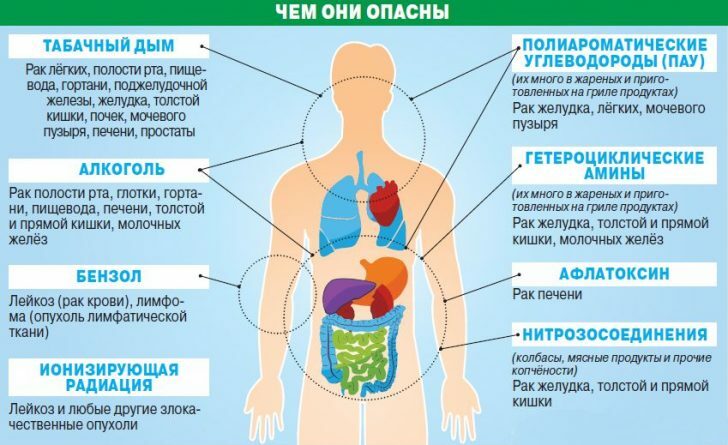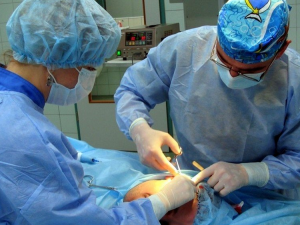Pancreatic cancer: symptoms, treatment, stages and prognosis
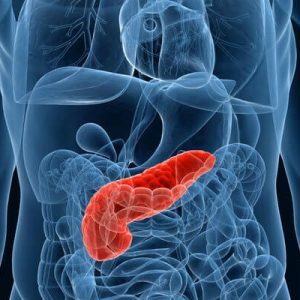

Pancreatic cancer is called a "silent killer" because it is too asymptomatic for too long, but even in the active phase of progression the clinical picture will be blurred, the patient does not correlate the deterioration of well-being with this cancer.Diagnosis of pancreatic cancer is always difficult, but the disease spreads quickly and gives metastases to the liver, bones, lymph nodes and other organs and systems.Very often oncological disease under consideration develops against a background of reduced immunity, chronic inflammatory diseases of the pancreas, diabetes mellitus.
Doctors oncologists strongly recommend that every person, even in the absence of any deterioration in health, undergo ultrasound examination of the abdominal cavity and retroperitoneal space once a year.This approach to health monitoring will allow timely detection of violations of the functionality of the pancreas.
Table of contents: What is the pancreas Cancer of the pancreas: statistics Causes of pancreatic cancer Classification of pancreatic cancer Symptoms of pancreatic cancer Pancreatic cancer cancer Pancreatic or pancreatic cancer cancer Pancreatic cancer metastasis How does pancreatic cancer develop?What is pancreaticIron
The pancreas is an organ that has a length of 16-22 cm and is distinguished by the shape of a pear lying on its side.Inside the organ under consideration consists of lobules - their cells produce all food enzymes.Inside the lobules there are islets of Langerhans - their cells secret hormones insulin, glucagon and somatostatin directly into the blood.
The pancreas is located at the level of the first lumbar vertebrae, but it is not in the abdominal cavity, but in the retroperitoneal space, next to the kidneys and adrenal glands.The organ in front is closed by the peritoneum, partially "hiding" behind the stomach, and its tail rests against the spleen - this "conspiracy" makes the pancreas quite difficult to access for ultrasound.But nevertheless, an experienced doctor will immediately see the pathological changes of the body in question, determine the dysfunction of the pancreas directly.
Note: all pancreas is covered with a capsule of connective tissue - it performs a protective function.Damage to this capsule is fraught with dangerous complications: the enzymes produced by the pancreas do not enter the duct, but into an unprotected place and begin to absorb the cells of the same organ.

The pancreas divides into three sections - the body, the tail and the head.
Pancreatic cancer: statistics
According to medical statistics, pancreatic cancer is on the 4th place among all deaths from oncological diseases, and this despite the fact that the pathology in question is quite rare!Such a large mortality from pancreatic cancer is associated with the fact that the pathology proceeds for a long time in general is asymptomatic, and then the patient's condition worsens, but the clinical picture remains unclear, treatment of some other diseases begins - precious time is simply wasted.
The risk of developing pancreatic cancer increases after 30 years, then increases after 50 years, and the peak is at age 70 years and older.
Pancreatic cancer always metastasizes to the liver, bone tissue, lungs.Growing up, the tumor affects the walls of the stomach, duodenum, large intestine.
Causes of pancreatic cancer
 Cell division occurs in every organ, and during this process mutated cells inevitably appear, with incorrect DNA - they are recognized by the immune system and destroy as "not native".If the process of such recognition and destruction is disrupted, the immune system fails, then the appeared "wrong" cells begin to be divided as well - the cancerous tumor grows.Then everything happens according to the same pattern: growing cancer cells "include" a protective mechanism and the body's immune system can not simply recognize them, and when they are accurately determined, the body is no longer able to deal with them alone - the first symptoms of cancer appear.
Cell division occurs in every organ, and during this process mutated cells inevitably appear, with incorrect DNA - they are recognized by the immune system and destroy as "not native".If the process of such recognition and destruction is disrupted, the immune system fails, then the appeared "wrong" cells begin to be divided as well - the cancerous tumor grows.Then everything happens according to the same pattern: growing cancer cells "include" a protective mechanism and the body's immune system can not simply recognize them, and when they are accurately determined, the body is no longer able to deal with them alone - the first symptoms of cancer appear.
Scientists do not distinguish any exact cause of pancreatic cancer development, but there are a number of risk factors that may well become a "push" to the appearance of a cancerous tumor. These include:
- Pancreatitis that occurs in chronic form .Pancreatic cells that are in a constant inflammatory process are the optimal medium for the appearance and division of mutating cells.The risk of developing the disease under chronic pancreatitis is reduced only if the pathology is introduced into the long-term stage of remission, and this is possible if the dieter and the prescriber's appointments are observed.
- Pancreatitis of hereditary etiology .A cancerous tumor develops according to the classical "scenario", but the cause of pancreatitis is exclusively heredity.
- Diabetes mellitus .Even insignificant insulin deficiency leads to an increase in the level of glucose in the blood - this is a risk of developing pancreatic cancer.
- Tobacco smoking .This is perhaps the only risk factor that can be designated as reversible.If a person throws a bad habit, then his pancreas gets rid of ischemia - the risk of cancer immediately decreases.Overweight, obesity .
- .With this condition, a person accumulates adipose tissue, which leads to a violation of the balance of sex hormones.Together, everything can lead to the appearance of mutated cells in the pancreas.
- Nonspecific ulcerative colitis and Crohn's disease .If these pathologies occur in chronic form and bother the person for a long time, then the pancreas will be regularly poisoned with toxic substances - they are inevitably formed during the inflammatory process.
- Stomach ulcer .With this pathology, the microflora of the stomach changes, the result is the accumulation of toxic compounds in the organs of the gastrointestinal tract.Even if a person has been operated on for gastric ulcer, the risk of developing the disease under consideration remains very high.
In addition to these factors, it is worth highlighting and improper nutrition - there are some studies that allow us to talk about an increased risk of developing pancreatic cancer when using certain foods in large quantities. Such dangerous products include, in particular:
- processed meat - sausages, sausages, ham, balyk, bacon and others;
- grilled red meat;
- fatty foods.
Some doctors and scientists say that several other positions can be attributed to the risk factors:
- the age of a person over 60;
- diseases of the oral cavity - for example, gingivitis, caries, pulpitis;
- direct contact with dyes and toxic substances - this factor is especially frequent for metallurgical workers;
- allergic diseases that occur in a chronic form - for example, atopic dermatitis, eczema;
- low physical activity of a person;
- already diagnosed cancer of other organs - pharynx, mammary glands, intestines, lungs, ovaries, bladder, kidneys;
- the presence of an oncological pathology in close relatives.
In pre-cancerous conditions, doctors consider chronic pancreatitis, pancreatic adenoma, and organ cyst.
Classification of pancreatic cancer
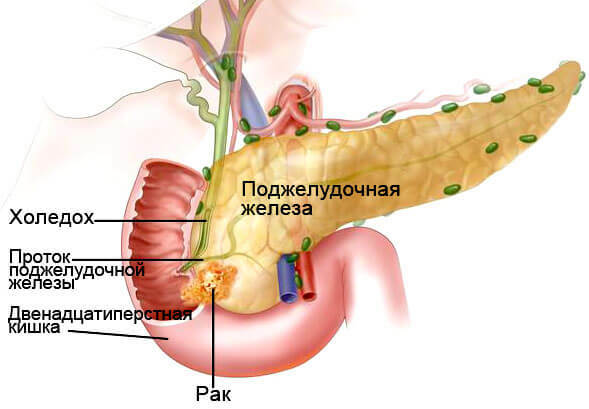
It is very important to understand the doctor from which cells the pancreatic cancer developed - this will determine the clinical picture of the disease and the properties of the tumor. The following classification is available:
- acinar cancer - cancer cells have the appearance of a bunch of grapes;
- mucinous cystadenocarcinoma - occurs during the degeneration of the pancreatic cyst, is more often diagnosed in women;
- ductal adenocarcinoma is the most common type of tumor that develops in cells that line the pancreatic ducts;
- squamous cell carcinoma - a type of disease is extremely rare, its development takes its course directly in the duct cells;
- glandular squamous cell carcinoma - occurs immediately from two types of cells: producing enzymes and forming excretory ducts;
- giant cell adenocarcinoma - is an accumulation of cystic cavities that are filled with blood.
Note: is also undifferentiated pancreatic cancer - the most dangerous form of the disease under consideration, which proceeds swiftly and always ends in a rapid lethal outcome.
In case of development of cancer in the endocrine part of the pancreas, its classification will be as follows:
- insulinoma - an excessive amount of insulin is produced, which lowers blood glucose level;
- glucagon - produced in large quantities of hormone glucagon, which increases blood glucose;
- gastrinoma - the hormone gastrin is produced, which is designed to stimulate the activity of the stomach.
Most often, pancreatic cancer is localized in the head of the organ.But in general there is a classification of the disease at the place of its localization:
- pancreatic tail cancer;
- pancreatic head cancer;
- carcinoma of the body of the organ in question.
Symptoms of pancreatic cancer
The clinical picture is always variable and may vary in patients depending on the specific pancreas department in which the malignant tumor develops.
Pancreatic head cancer
At the very beginning of its development, this kind of tumor does not have any symptoms. But the first manifestations of this dangerous disease include:
-
 Pain in the abdomen.It can be "under the spoon" and simultaneously in the hypochondrium, there is an irradiation of pain in the back.Increases the intensity of pain at night, the patient becomes easier if you tilt the body slightly forward or take a recumbent position with knees bent at the knees.
Pain in the abdomen.It can be "under the spoon" and simultaneously in the hypochondrium, there is an irradiation of pain in the back.Increases the intensity of pain at night, the patient becomes easier if you tilt the body slightly forward or take a recumbent position with knees bent at the knees. - Periodically, the reddening of a vein in the lower / upper limbs.The veins may well form clots, so a part of the arm or leg can suddenly acquire a cyanotic color.
- Without compliance with any diet the patient begins to lose weight sharply.
- After eating, there is a feeling of heaviness "under the spoon".
- The patient complains of fatigue, drowsiness and general weakness.
As the tumor grows, there are other signs of pathology:
- Jaundice begins.And, at first the patient can not even suspect about its presence, well, occasionally will note the yellowing of the eye sclera - no more.But as the disease progresses, the patient's skin becomes not just yellow, but greenish-brown.
- The skin of the entire body is constantly itching.Such intense itching is associated with stagnation in the gallbladder - bile is simply deposited in the skin and causes such a reaction of the body.
- Urine acquires a darker shade, and the feces become almost colorless.
- The patient completely loses appetite, develops a full intolerance to meat and fats.
- There are digestive disorders - nausea, vomiting, stool changes.
- The feces become greasy( it shines), liquid and fetid.
Pancreatic body or tail cancer
The following state changes become symptoms of progressive cancer:
- A large amount of excreted urine, persistent thirst, dry mouth, nighttime urination are signs identical to diabetes mellitus.
- Fatty stools, pain in the upper abdomen, nausea, decreased or no appetite, weight loss - signs that are identical to chronic pancreatitis.
- Occurrence of jam at the corners of the mouth, weight loss, smooth surface and intense red color of the tongue, paleness of the skin, rashes on the upper and lower extremities, development of dermatitis and eczema - these signs are present only in the case of glucagonome progression.
- Pain after eating "under the spoon", feeling that the stomach is "standing", persistent diarrhea, feces fat and poorly washed off the toilet - signs that appear with the progression of gastrinoma.In addition, several other symptoms of pancreatic body or pancreatic cancer need to be highlighted:
- menstrual irregularities in women;
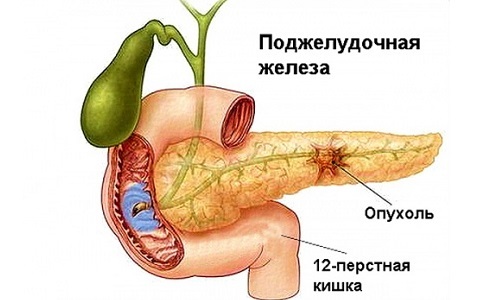
;
- wounds on the skin surface heal extremely slowly;
- on the lower extremities formed trophic ulcers;
- the sexual desire is sharply reduced or completely absent;
- skin patches periodically appear red spots, which are often mistaken for allergies;
- occurrence of "hot flashes" of heat to the face and upper limbs;
- in the face and legs periodically occur seizures, but without losing consciousness;
- in the left hypochondrium clearly felt heaviness.
It can be concluded that pain in the upper abdomen, fatty stools and weight loss are the main signs of pancreatic cancer, regardless of which department of the body the tumor develops.
Metastasis of pancreatic cancer
This disease very actively disperses its cancer cells on the human body. And this can happen in three ways:
- Through the circulatory system .Thus, cancer cells enter the liver, kidneys, bone tissue, brain, lungs - almost all internal organs.
- Through the lymphatic system .Here the process of tumor dissolution of its malignant cells occurs in several stages:
- is first subjected to an attack of cancer cells lymph nodes that are located directly around the pancreas;
- , then the tumor dissipates into the lymph nodes that are located behind the pancreas - most often at the site of the stomach passage into the duodenum;
- further start to be affected by lymph nodes that are located in the mesentery( upper section);
- The last stage of diffusion promotes the penetration of cancer cells into the lymph nodes located in the retroperitoneal space.
- Per peritoneum .Cancer cells enter the intestinal wall, the peritoneum and the pelvic organs.
There is such a thing as penetration of a tumor of the pancreas - the cancer grows into organs located next to the already affected gland.For example, if the cancer develops in the tail of the gland, then its cells can germinate into the spleen, and if the cancer is localized in the head of the organ, the tumor will spread to the stomach and bile ducts.
How pancreatic cancer develops
There are 4 stages of the disease under consideration - for each of them there are percolation characteristics.
0 stage of pancreatic cancer
This stage is completely asymptomatic, mutated cells have just begun to exist and can expand into the body.If at this stage a person undergoes surgical treatment, the chances of completely getting rid of cancer are 99%.
Diagnosis of pancreatic cancer at this stage can only be done by ultrasound or computed tomography.
1 stage of pancreatic cancer
IA - a cancer tumor is located exclusively in the pancreas and has a size of less than 2 cm. As a rule, no symptoms are noted by the patient, the only exception is the case of malignant disease localization in the area of exit into the duodenum.With this development of events, the patient will point to nausea and periodically appearing diarrhea in case of a diet violation.
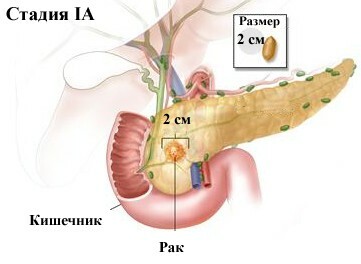
IB - the tumor is also located within the pancreas, its size becomes more than 2 cm. If the cancer is located in the head of the body, the patient will have jaundice, diarrhea and nausea, and unintentional pain in the left hypochondrium.If a malignant tumor develops in the body or tail of an organ, then symptoms of glucagonome, insulinoma or gastrinoma will appear.
2 stage of pancreatic cancer
IIA - a cancerous tumor has gone beyond the pancreas and sprouted into the duodenum and bile ducts.
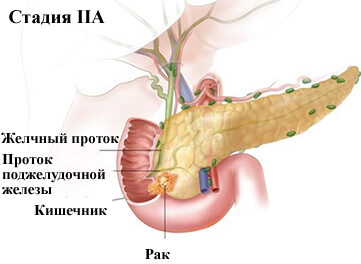
IIB - a tumor can have absolutely any dimensions( even small ones), but its cells have already dispersed into the nearby lymph nodes.Any additional symptoms do not give this fact, the patient complains of weight loss, pain in the upper abdomen, diarrhea and vomiting.

Stage 3 of pancreatic cancer
Cancer is already widespread.At this stage, malignant cells are found in the stomach, large blood vessels, spleen, large intestine.In some cases, cancer cells are present in the regional lymph nodes.
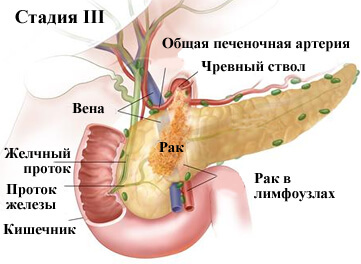
Stage 4 of pancreatic cancer
The most severe stage of the current disease, when metastases of a cancerous tumor are found in very distant organs - the lungs, brain, ovaries and others.
Stage 4 of the pancreatic cancer has several distinctive symptoms:
- the pain of the upper abdomen is pronounced, has a shingling character;
- patient is depleted because of a complete refusal to eat;
- the liver is enlarged and this provokes pain and heaviness in the area of its anatomical location;
- fluid accumulates in the abdomen;
- skin at the same time become pale and yellow;
- enlarged spleen, which provokes acute pain in the right hypochondrium;
- under the skin appear soft nodules.
If there are metastases of cancer in the liver in 4 stages, the following signs will be present:
- , eye and skin proteins acquire a stable yellow color;
- gum and mucous membranes begin to bleed;
- feces become colorless, urine acquires intensely dark color;
- fluid accumulates in the abdomen - ascites develops;
- from the mouth of the patient is constantly present an unpleasant smell.
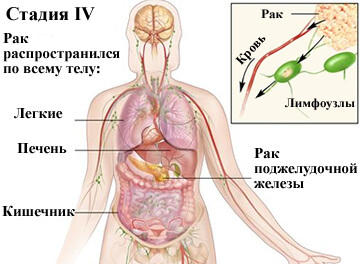
Note: for metastases in the liver in 4 stages of pancreatic cancer, even with ultrasound and computed tomography, it is extremely difficult to determine which cancer is primary.This can only be done by the procedure of histological examination of tissue fragments of the affected organs.
Brain metastases in 4 stages of the disease are characterized by the following changes:
- behavior becomes inadequate, the personality is almost completely changed;
- muscle tone of the extremities changes and, as a rule, it occurs only on one side;
- smell, vision and taste are weakening;
- patient is not able to perform some simple actions;
- lost the skills acquired in the work process;
- the patient's voice becomes nasal;
- the person becomes asymmetric;
- speech is incomprehensible to others.
In case of penetration of cancer cells into the lungs, dyspnea will be present even in absolute calm, dry paroxysmal cough, hemoptysis( in case of rupture of the blood vessel).
Metastases in the bone tissue are manifested by severe pain in the bones - it is especially pronounced with a simple, light tapping on the skin at the location of the affected bone.
Diagnostic measures
To diagnose "pancreatic cancer", the doctor will perform a full examination of the patient. The following types of analyzes will help in diagnosis:
- determination in the blood of the oncomarker;
- pancreatic elastase in feces;
- Alkaline blood phosphatase;
- level of insulin;
- pancreatic amylase in urine and blood;
- level of glucagon and gastrin in the blood.
These tests will help the doctor only to suspect a progressive cancerous pancreas tumor.Conducted general tests of blood and urine, coagulogram and liver tests will help to know how much the homeostasis is changed.
The exact diagnosis is based on the results of the following examinations:
- Ultrasound examination of the abdominal cavity - allows to determine only the localization of a cancerous tumor that will need to be studied.
- Computed tomography - allows you to examine the pancreas in detail, the procedure is very effective.
- Magnetic resonance imaging is a more informative study than computed tomography.Allows you to study the condition of the kidneys, liver, gall bladder and other organs of the abdominal cavity on a par with the pancreas.
- Endoscopic retrograde cholangiopancreatography.It is performed using an endoscope and injecting a contrast agent into the pancreatic ducts.
- Positron Emission Tomography.A modern research method that yields accurate results.In the patient's vein, a contrast agent( sugar isotopes) is introduced and, as already accumulated in the organs, a direct study is carried out.
- Endoscopic retrograde cholangiography.Under the control of the ultrasound machine, the doctor makes a puncture in the liver and injects a contrast agent into it.After that, you can proceed to the survey.
- Laparoscopy.It is also performed by a puncture into which a probe is inserted that allows to examine the condition of the pancreas, if necessary, the doctor will perform biopsy procedures - taking the organ tissue fragment for histological examination.
Note: until the results of a biopsy are obtained, no doctor has the right to diagnose "pancreatic cancer".Therefore, when carrying out studies using an endoscope or by laparoscopy, a specialist necessarily takes a tissue fragment of the organ for histological examination.
Methods for treatment of pancreatic cancer
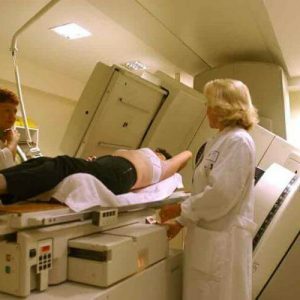 Treatment of the disease in question is selected in a strictly individual order - it all depends on the size of the tumor, how much it has grown into the organ, whether there are metastases.The ideal treatment option will be the removal of a cancerous tumor and further irradiation of this place with gamma rays.But this option is only possible when diagnosing pancreatic cancer at 0 or 1 stage of development.In all other cases, specialists carry out combined treatment.
Treatment of the disease in question is selected in a strictly individual order - it all depends on the size of the tumor, how much it has grown into the organ, whether there are metastases.The ideal treatment option will be the removal of a cancerous tumor and further irradiation of this place with gamma rays.But this option is only possible when diagnosing pancreatic cancer at 0 or 1 stage of development.In all other cases, specialists carry out combined treatment.Surgical treatment of pancreatic cancer
The following operations are performed:
- Operation Whipple .The removal of the head of the pancreas( along with the tumor), part of the duodenum, gall bladder and stomach.Such surgical intervention is carried out only at the initial stages of the development of the disease in question, moreover, the patient should not think too long about consenting to such work - time is too expensive.
-
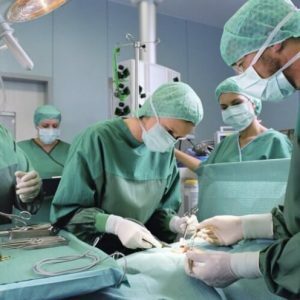 Complete removal of the pancreas .It is advisable to carry out such an operation in case of growth of a cancer tumor inside the organ when it has not yet emerged beyond the limits.
Complete removal of the pancreas .It is advisable to carry out such an operation in case of growth of a cancer tumor inside the organ when it has not yet emerged beyond the limits. - Segmental resection of .Removed only the central part of the pancreas along with the tumor.The remaining two parts are sewn using an intestinal loop.
- Distal resection of .If the cancer has localization in the tail and body of the pancreas, then they are removed and the head is left.
- Endoscopic stent .If the tumor is inoperable and blocks the bile duct, then a tube is inserted into it, through which bile will be delivered either to the small intestine or to a special plastic tank fixed outside the body.Bypass of the stomach . .It is advisable to perform such surgery only in case of growth and pressure of the tumor on the stomach, when food can not enter the intestine.Doctors simply sew the stomach and intestines, bypassing the malignant tumor.
- menstrual irregularities in women;
If the pancreatic tumor is no longer amenable to any treatment, then doctors can conduct palliative operations that should make life easier for the patient. These include:
- removal of part of a malignant tumor - relieves pressure on nearby organs and nerve endings;
- removal of metastases;
- elimination of obstruction of the bile duct and / or intestine;
- Elimination of perforation of the wall of the stomach, intestines or the most diseased organ.
Operations are carried out either using the classical method with a scalpel or with a gamma knife - this allows not only to remove the tumor, but also to irradiate nearby tissues.In this case, if there are any cancer cells, they are destroyed.
After surgery, radiotherapy or chemotherapy is mandatory.
Chemotherapy for pancreatic cancer
Carried out by specific drugs that inhibit the growth and division of cancer cells.Unfortunately, these drugs have an effect on healthy cells, which leads to serious side effects - hair loss, constant nausea, neuroses, frequent diseases of infectious pathologies.
Chemotherapy is of two types:
- monotherapy - the patient is assigned only one drug, the effectiveness of such treatment is 15-30%;
- polychemotherapy - doctors combine different means, the effectiveness is 40%.
To this type of treatment the patient suffered more or less without consequences, he is selected a special diet with the inclusion of fermented milk products and the refusal of alcoholic beverages and heavy meals, it is recommended to visit a psychologist, prescribe antiemetic drugs.
Target therapy
A modern treatment for pancreatic cancer, which involves taking medications that have an effect solely on cancer cells without affecting healthy tissues.Of course, this method of treatment is very effective and well tolerated by patients, but its cost is too high.
Radiation therapy for pancreatic cancer
Tumor irradiation:
- before surgery - the size of the cancerous tumor is decreasing;
- during and after surgery - this will prevent relapse;
- for an inoperable tumor - the patient's condition is alleviated, the growth of cancer cells stops.
Constantly developing new drugs that will help mankind cope with cancer - for example, scientists from the United States have already developed a vaccine that only infects cancer cells.In such a vaccine there are radioactive particles, which are called to destroy malignant cells.
Forecasts for pancreatic cancer
In general, the predictions for pancreatic cancer are extremely unfavorable.And this is due to the fact that the disease in question is rapidly expanding, while not showing any symptoms.
According to statistics, the following conclusions can be drawn:
-
 If a cancerous tumor has already transcended the pancreas, then more than 5 years, only 20% of patients live.And such a prognosis is only valid if the patient is actively engaged in treatment.
If a cancerous tumor has already transcended the pancreas, then more than 5 years, only 20% of patients live.And such a prognosis is only valid if the patient is actively engaged in treatment. - If surgical intervention for the disease in question was not carried out, the patients live no more than 6 months.
- During the course of chemotherapy patients with pancreatic cancer live about 6-9 months.
- Radiation therapy without surgery prolongs the life of the patient only for 12-13 months.
- If a radical operation was performed, then patients live for 2 more years, but the five-year survival rate is only 8%.
- If the doctors are already palliative, the patients will live a maximum of a year.
Note: if pancreatic cancer was diagnosed in 4 stages of development, then doctors give a prediction for only one year, and up to this time, no more than 5% of all patients survive.The more pain and poisoning with toxins of a cancerous tumor, the shorter the human life!
The cause of death in pancreatic cancer is hepatic, renal or heart failure.
Preventative measures
This is a terrible disease, pancreatic cancer, it is quite possible to warn!Doctors recommend:
- Refuse from smoking.All changes in the organs of a person that occur during smoking, are reversible.
- Refuse from foods high in sugars, prefer non-starchy fruits and vegetables.
- Do not abuse products from the protein group, periodically arrange for themselves protein-free days of release.
- In the diet should be present cabbage - white cabbage, savoy, Brussels.
- Regularly use raspberries, pomegranate, strawberries and strawberries.
- You need to eat fish and milk, dairy products.
- Red meat, egg yolk and offal are dangerous for the pancreas.
- Be sure to monitor the intake of vitamins in the body and, if necessary, increase nutrition or take vitamin-mineral complexes.
Pancreatic cancer is a terrible disease that almost instantly takes the lives of people.In order to detect the presence of cancer cells in time in this body, you only need to undergo regular examinations with doctors - this will allow you to undergo treatment at the very beginning of pathology development.
Tsygankova Yana Aleksandrovna, medical reviewer, therapeutist of the highest qualification category

